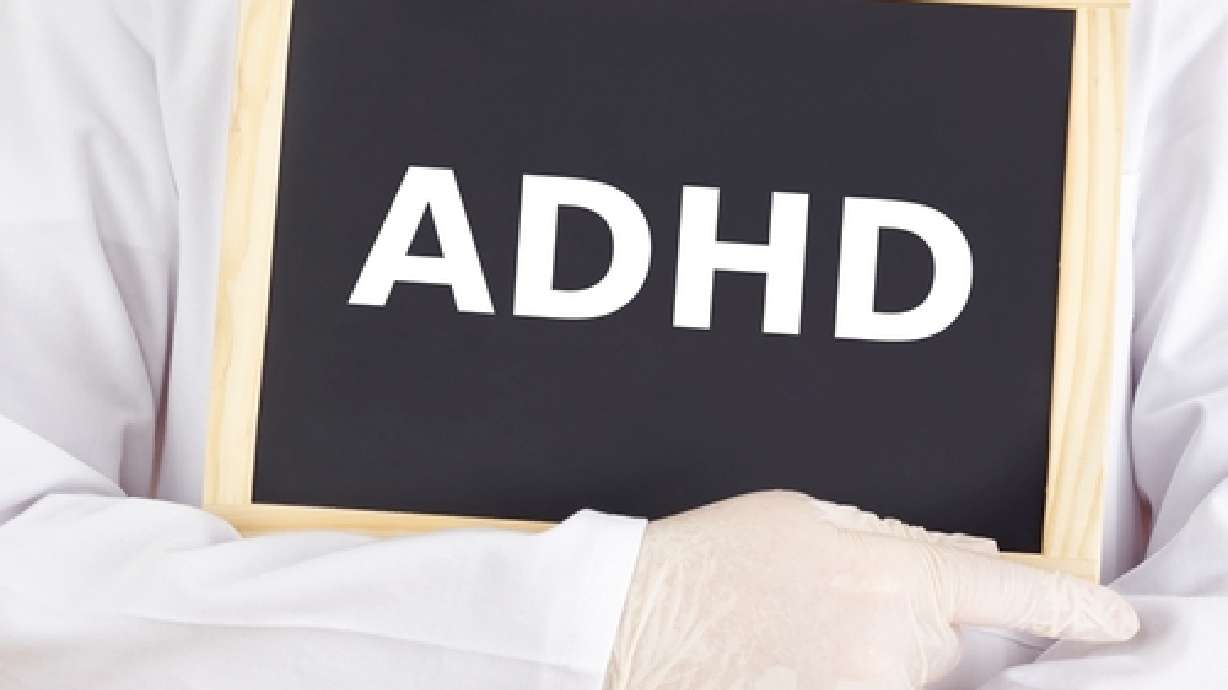Estimated read time: 3-4 minutes
This archived news story is available only for your personal, non-commercial use. Information in the story may be outdated or superseded by additional information. Reading or replaying the story in its archived form does not constitute a republication of the story.
SALT LAKE CITY — Attention deficit hyperactivity disorder is a biological disorder that affects many children and adults — both those diagnosed and those who care for them.
It is estimated that 11 percent of U.S. children have ADHD. There currently is no cure, but this does not mean you should give up or not seek help.
The types of ADHD
Those who have ADHD have a very hard time concentrating on anything for any length of time. They usually cannot stand still, pay attention or control their behavior for any length of time, and they are easily distracted.
There are three main types of of the disorder: inattentive type, hyperactive-impulsive type and combined type.
Inattentive type ADHD. As noted by the staff editors at WebMD.com, patients with inattentive type ADHD usually exhibit many of the following symptoms:

- Have consistent trouble paying attention to anything for long periods of time
- Shift from task to task without finishing anything
- Become easily distracted
- Miss important details
- Make careless mistakes in homework and tests
- Get bored quickly
- Have trouble getting organized (for example, losing homework assignments or keeping a bedroom messy and cluttered)
- Don't seem to listen when spoken to
- Daydream
- Are slow to understand information
- Have trouble following instructions
- Are too active and tend to act without much thought or control
- "Appear to be in constant motion. Their bodies — and mouths — are always going, as if driven by a motor."
Conditions which co-exist with ADHD include: learning disabilities, oppositional defiant disorder or conduct disorder, anxiety or depression, autistic spectrum disorders, bipolar disorder.
Causes of ADHD
It is extremely important for parents to know that ADHD is not caused by child-rearing methods or the family environment. It is common to have ADHD run in family lines, and the disorder has also been linked to environmental factors such as cigarette smoke, exposure to lead or a brain injury.
Treatments for ADHD
Studies show that ADHD is best treated with strategies that aim at reducing symptoms and help the patient succeed in various settings and personal relationships.
Medication. Studies show that medication works well for most people. It can help the patient focus attention and decrease activity and impulsivity. Medications can't cure ADHD or teach new behaviors or skills.
Education, training and support groups. No one person can handle ADHD alone with any success. First educate yourself and then seek resources to help — like ADHD classes, books, websites, support groups, and parent skills training.
Behavioral therapy. This will help co-existing conditions like anxiety or depression. Behavioral therapy helps the person focus on current behaviors and learn more effective ways to handle all situations.
Many parents refuse to seek treatment for a child with ADHD, but allowing this condition to go untreated will lead to future difficulty in relationships, not only for the people who have ADHD but for their families.
Suzanne Carlile, "Nurse Suzy," has been a nurse since 1982. Her main focus is critical care and nursing education. She holds a master's degree in nursing, is a Certified Emergency Nurse, and a member of NNSDO Intermountain West Chapter.









